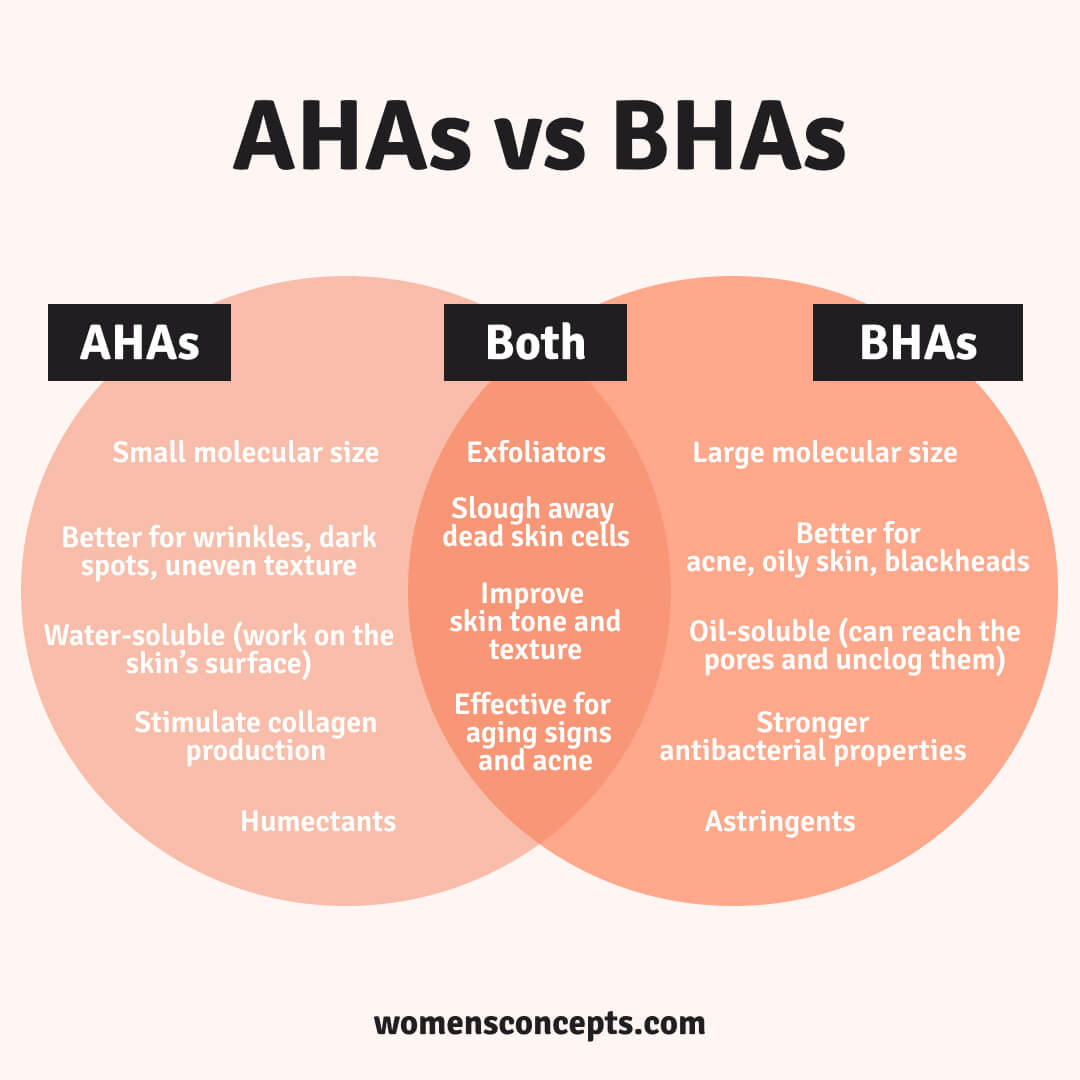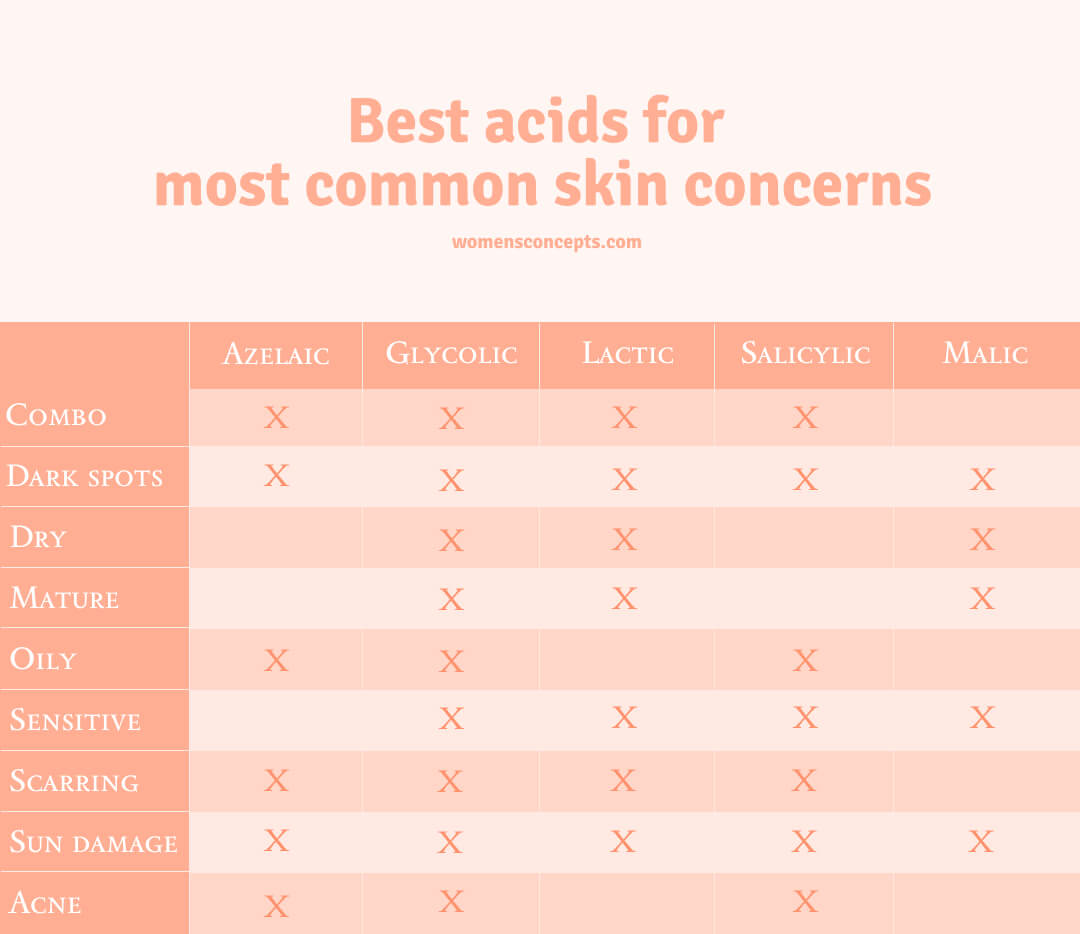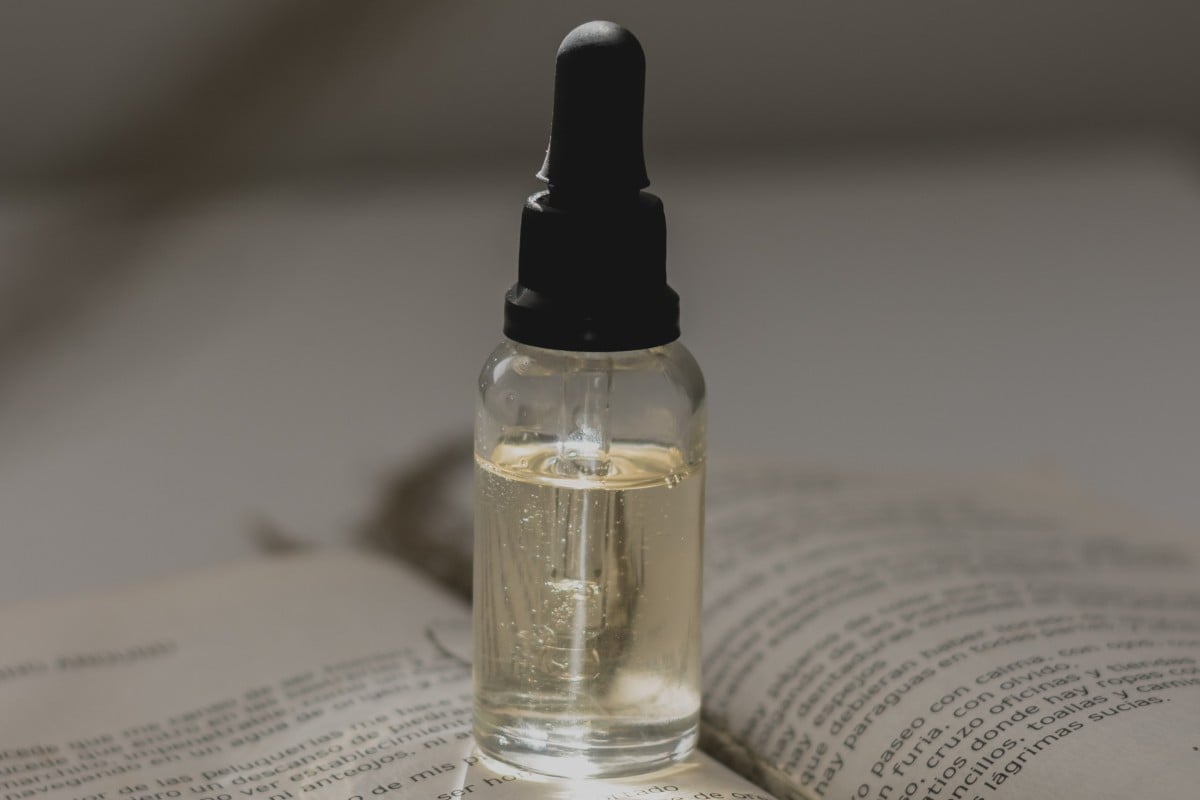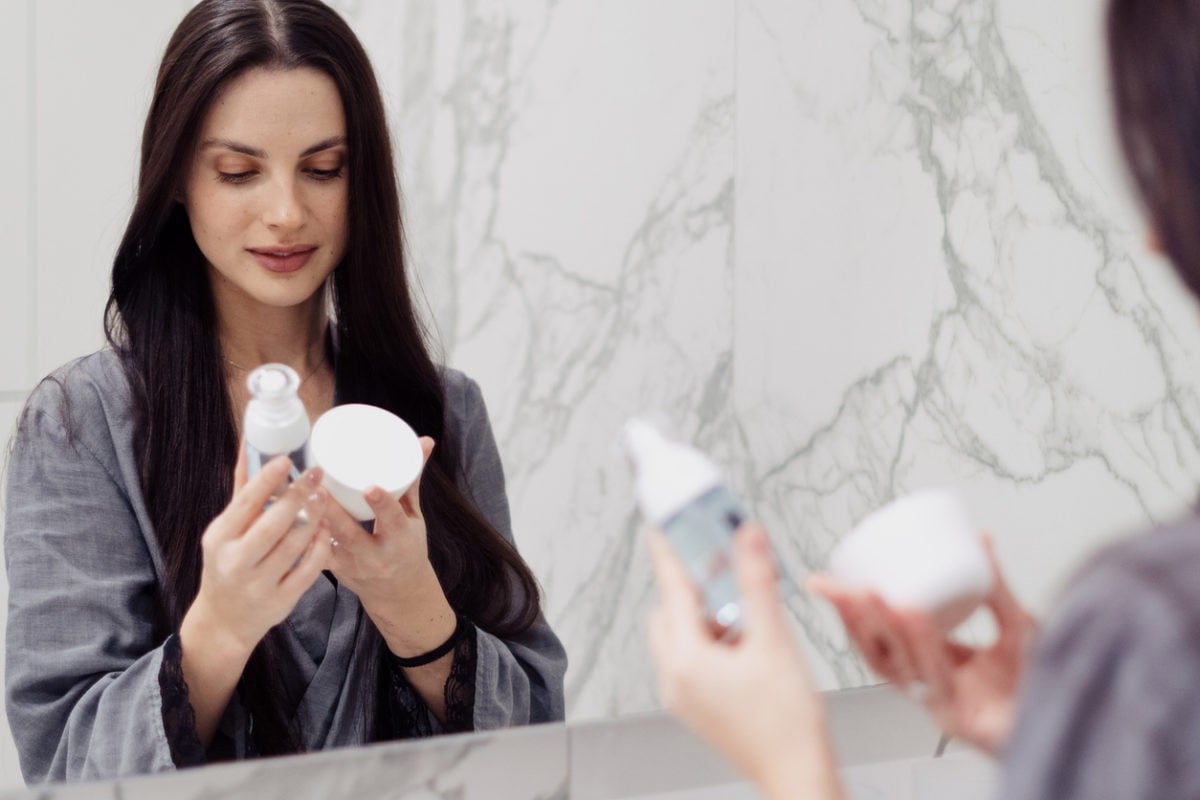Have you tried everything under the sun and still feel like your skincare routine just isn’t cutting it? Then it’s time to ask yourself if you’re using the right exfoliant. To help you out, we’ve pitted AHAs and BHAs against each other to see which one is more worthy of your routine.
Alpha-hydroxy acids (AHAs) and beta-hydroxy acids (BHAs) are the most talked-about exfoliants in the skincare world, and despite having quite a few things in common, they’re very much different and serve distinct purposes. So what sets AHAs and BHAs apart, and how do you know which one is right for you? If you’ve been pondering these questions, you’ve come to the right place. By the time you finish this article, you’ll be able to tell the differences between AHAs and BHAs. You’ll also know when to use each one depending on your skin and what you are trying to achieve. AHAs, BHAs, fight!
What are AHAs
Alpha-hydroxy acids are water-soluble exfoliants that occur naturally in fruits (malic and citric acid), milk (lactic acid), and sugar cane (glycolic acid). Of course, they can also be chemically synthesized to achieve a specific concentration and pH level suitable for topical use. Their role in skincare is to remove the skin’s top layer to speed up the cells’ natural turnover process, which means new cells will replace the old, damaged ones.[1] This is why you get the coveted glow after you use your glycolic acid product. It basically renews the skin, leading to a brighter, more radiant, smoother, and firmer complexion over time.
In short, alpha-hydroxy acids:
- Are derived from fruits, sugar cane, milk
- Are water-soluble
- Work on the surface to loosen and remove dead skin cells
- Have humectant activity (attract water molecules)
- Stimulate collagen production
- Have been clinically found effective in improving skin texture, minimizing fine lines and wrinkles, and reducing blemishes
- Examples: glycolic acid, lactic acid, malic acid
What are BHAs
Just like their counterparts, beta-hydroxy acids are chemical exfoliants lab-made or extracted from natural extracts. Of all BHAs, salicylic acid is the best-known and is derived from willow bark. What sets BHAs apart from AHAs is their oil solubility and lipophilic nature. It means they can go through the fat layer and reach the pores to eliminate bacteria, sebum, and dead cells trapped inside them, unlike AHAs, which work on the skin’s surface.[2] This gives BHAs comedolytic properties, aka the ability to unclog pores and break down the formation of comedones. For this reason, they’re the go-to for treating acne, balancing oily skin, and preventing congestion.
In short, beta-hydroxy acids:
- Are derived from willow bark
- Are oil-soluble
- Work by penetrating into the pores to unclog them and clear them of bacteria, sebum, and dead cells
- Have strong antibacterial properties
- Good for acne-prone and oily skin and blackheads
- Examples: salicylic acid, lipohydroxy acid
AHAs vs. BHAs
While both are exfoliants, the main thing that makes AHAs different from BHAs is their chemical molecular structure. AHAs are water-soluble, so they exfoliate the skin’s surface to eliminate dead cell buildup. In contrast, BHAs are oil-soluble and penetrate deeper into the pores to unclog them and reduce the chances of acne breakouts.

Without making this sound like a chemistry class and keeping technicalities at a minimum, these are the key differences between AHAs and BHAs you should keep in mind:
- Chemical structure: Glycolic and lactic acids (AHAs) are water-soluble, while salicylic acid (BHA) is oil-soluble. Again, this means AHAs don’t penetrate the pores as profoundly as BHAs, meaning they’re best used to address surface skin issues. BHAs go deeper into the skin and can reach pores and eliminate bacteria.
- Skin: AHAs are best for people with normal, dry, sensitive, and sun-burned skin. On the flip side, BHAs address oily skin prone to pimples, blackheads, bumps, congestion, blemishes, and enlarged pores
- Benefits: AHAs are more researched for improving skin texture and tone, reducing fine lines and wrinkles, and increasing skin hydration. BHAs do a better job of reducing inflammation, treating acne, and preventing skin congestion.
- Irritation potential: AHAs can be more irritating to the skin compared to BHAs, especially for those with sensitive skin. On the other hand, BHAs can be drying because of their astringent effects.
- Sun sensitivity: AHAs are known to make the skin photosensitive, while BHAs do not increase the skin’s sensitivity to UV but actually provide photoprotection and improve sun-damaged skin.
- Properties: AHAs have humectant and collagen-stimulating properties, which can plump and hydrate the skin. BHAs have astringent effects, meaning they can reduce oiliness and tighten the skin, thereby shrinking the appearance of pores.
- Concentration: According to the FDA, the maximum concentration of AHAs allowed in OTC products is 10% and BHA 2%.[3]
Should you use AHAs or BHAs?
Even though both groups of exfoliants are great for resurfacing and retexturizing the skin—making it glow and soft—their distinctive properties give them the ability to target different skin concerns. AHAs are humectants and hike up collagen levels, so they’re more effective for aging signs. BHAs have stronger antibacterial effects and comedolytic properties, so they work best for pimples and blackheads.
Let me put this in another way.
Do you have normal, rough, or dry skin? Or is your goal to smooth your skin texture, brighten dark spots, or soften fine lines? Then you are the ideal candidate for AHAs. If you have oily skin prone to acne, large pores, and blackheads, you can bet on BHAs.

Can you use AHAs and BHAs together?
I found this study called “Two is better than one: The combined effects of glycolic acid and salicylic acid,” which is exactly what I had in mind when I started this article. The study found that using glycolic and salicylic acids together provides superior results than using them alone.[4] The combination resulted in a major decrease in acne and oiliness, a more even texture, and smoother skin.
So yes, you can get the best of both worlds by using products that contain AHAs and BHAs. By teaming them up, you exfoliate your skin on multiple layers, maximizing the benefits of each. You can use AHAs and BHAs together either by alternating their use (like AHAs one day and BHAs the other day, or BHAs in the morning and AHAs at night) or by applying a product that is made with a blend of acids.
Cult-favorite products like Murad AHA/BHA Exfoliating Cleanser, Drunk Elephant T.L.C. Framboos Serum, The Ordinary Peeling Solution, contain the trifecta of acids, including glycolic, lactic, and salicylic acids. They are the best way to use AHAs and BHAs on your skin in one effortless application.
And if you’re wondering if you can use them in separate products and layer an AHA exfoliant over BHA at the same time, or vice versa, I highly suggest not doing it. Unless you have both in a single formula, there’s no reason to complicate your routine by mixing multiple exfoliating products at once. Doing so, you risk over-exfoliating your skin and impairing its moisture barrier, which can result in irritation, dryness, and increased sensitivities. Most people don’t need that level of exfoliation anyway.
How to use AHAs and BHAs
AHAs and BHAs are literally everywhere in skincare, and you’ll find them in all types of products, including cleansers, toners, serums, peels, and face masks. Overall, products with moderate concentrations of acids (2-5% AHAs, 0.5% BHAs) can be used daily, while more potent serums and facial peels should be used 2-3 times a week. Of course, this depends on each product, so read the directions thoroughly and follow them accordingly.
One thing to keep in mind when using AHAs and BHAs is that both can dehydrate the skin by stripping it of moisture. They may also irritate, especially if you have sensitive skin, and cause peeling and redness. This happens because the skin is not yet accommodated with the rate of increased cell turnover caused by exfoliation and temporarily lacks lipid protection. But you can mitigate all these side effects by keeping your skin moisturized and using a replenishing cream to rebuild the lipid barrier—like CeraVe Moisturizing Cream.
Lastly, applying sunscreen every day (or at least when you go out) is non-negotiable, especially if you’re regularly using AHAs and BHAs.
The verdict
There’s no clear-cut way to decide which one is better between AHAs and BHAs, so I wouldn’t make my decision based on that if I were you. Instead, I’d focus on my skin concern and pick the acid that works best for it. Often, the perfect solution is a blend of both AHAs and BHAs. Ease into it, starting with a low concentration and working your way up as your skin gets used to it is the best approach. It’s all about trial and error, so keep a close eye on your skin and make tweaks to the concentration and frequency as needed if you encounter any irritation.





